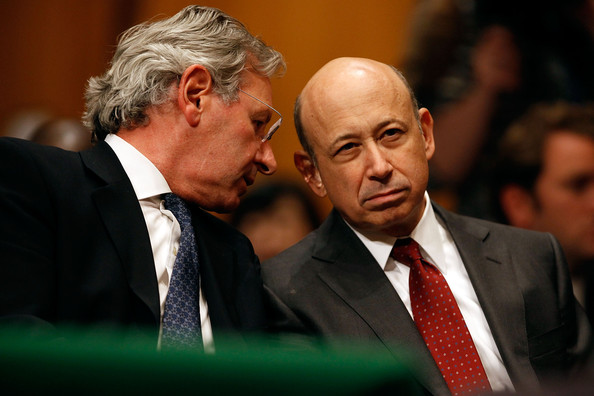
An important point not mentioned by Cohan below is that by the time Goldman began entering into CDS contracts with AIG, they were often creating the underlying securites. That is to say, Goldman had a hand in making the CDOs, so they knew that the CDS had a better chance of paying off than AIG assumed when they wrote the contracts.
Cohan, via the FCIC report, does however provide amazing new detail and general color of the internal back-and-forth with Goldman execs, including the possibility of collusion between Goldman and French bank Société Générale, who pocketed more than $16 billion from U.S. taxpayers via AIG.
--
Background:
--
How Goldman Sachs Killed A.I.G.
by William Cohan
The conventional wisdom has it that the final report of the Financial Crisis Inquiry Commission was a low-budget flop, hopelessly riven by internal political disputes and dissension among the commission’s 10 members. As usual, the conventional wisdom is completely wrong. Actually, the report — and the online archive of testimony, interviews and documents that are now available — is a treasure trove of invaluable information about the causes and consequences of the Great Recession.
For instance, on the exceptionally important but little understood role played by the increasingly lower prices Goldman Sachs placed on the complex mortgage securities on its balance sheet — which helped determine the fate of many of its shakier Wall Street brethren — the commission report, on page 237, is crystalline:
As the crisis unfolded Goldman marked mortgage-related securities at prices that were significantly lower than those of other companies. Goldman knew that those lower marks might hurt those other companies — including some clients — because they could require marking down those assets and similar assets. In addition, Goldman’s marks would get picked up by competitors in dealer surveys. As a result, Goldman’s marks could contribute to other companies recording “mark-to-market” losses: that is, the reported value of their assets could fall and their earnings would decline.
The first victims of Goldman’s decision in May 2007 to begin communicating its lower marks to the rest of the marketplace were the two Bear Stearns hedge funds that were heavily invested in complex and squirrelly mortgage securities. Although Goldman disputes the charge, the lower marks caused the two hedge funds to recalculate the funds’ net asset value, known in the business as N.A.V., and to re-issue to investors in June 2007 a far lower N.A.V. — down 19 percent, rather than down 6 percent. All hell broke loose. Soon enough, the funds’ investors were blocked from withdrawing their money, and by July the funds filed for bankruptcy and were soon liquidated. Investors lost much of the $1.5 billion they had invested. The liquidation of the two hedge funds led to the collapse of Bear Stearns nine months later.
Continue reading at the New York Times...
--
Janet Tavakoli offers additional detail:
Further reading...
- Who Is Dan Jester And Why Did Tim Geithner Call Him 103 Times During The Financial Meltdown Of 2008?

